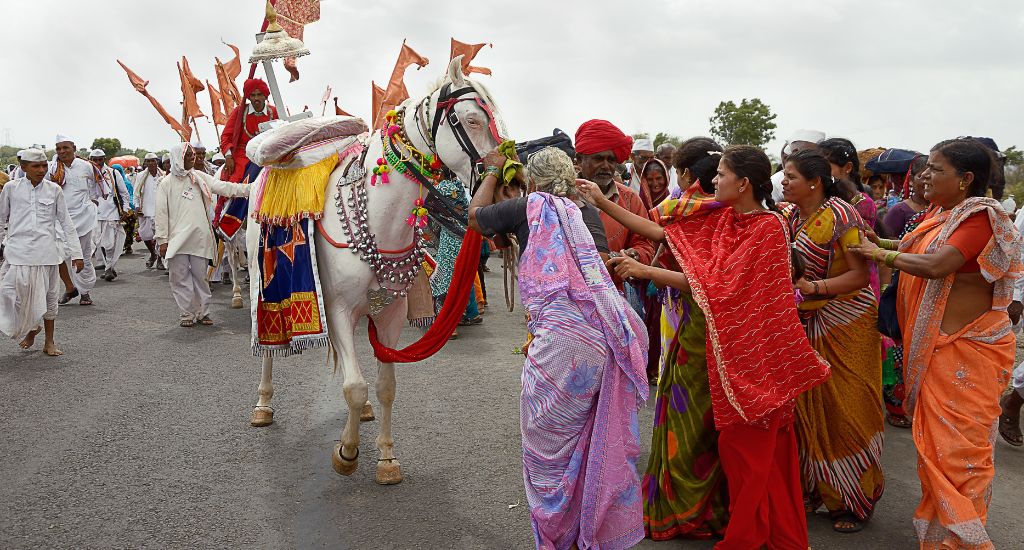
When it rains, it pours festivals in July
From spiritual processions to harvest festivals, and everything in between, here are six vibrant rural celebrations across India that you can visit this month.

From spiritual processions to harvest festivals, and everything in between, here are six vibrant rural celebrations across India that you can visit this month.
Across the country, the month of July is packed with celebrations. From Puri’s famous Jagannath rath yatra to Uttarakhand’s kawad yatra, this time of year witnesses several lively festivities. There are also some lesser-known but equally wonderful celebrations taking place in rural India too. Here is a list of some of these vibrant rural festivals happening in July that you can make plans to be a part of.

One of Maharashtra’s renowned spiritual yatras (processions) is Pandharpur Wari. Organised in honour of Lord Vithoba, wari refers to a sacred pilgrimage while warkari is the one who performs it.
Thousands of devotees start their journey from various parts of Maharashtra and walk with palkhis (palanquins) carrying padukas (symbolic footwear) of their revered saints, such as Saint Gyaneshwar and Saint Tukaram to reach Pandharpur, where the grand Vithoba temple is located.
This journey takes about 21 days to complete. Two major palanquins that make their way to Pandharpur start from Alandi and Dehu. The procession reaches its destination on the day of ashaadh ekadashi, when devotees engage in pujas and spiritual practices. People from Maharashtra, Goa, Telangana, Karnataka and Andhra Pradesh greatly revere Lord Vithoba.

Among one of Himachal Pradesh’s most popular fairs is the Minjar festival. Celebrated in Chamba valley, this festival commemorates the victory of the Raja of Chamba over the ruler of Trigarta, back in 935 AD.
According to popular belief, upon the return of the victorious king, his subjects presented him with paddy and maize. These gifts stood for prosperity and happiness. Minjar, which means silk tassel, symbolises the shoots of these crops which appear around this time of the year.
Hoisting of the minjar flag begins during this week-long fair which attracts a large crowd from all over the country. Locals dressed in colourful attires, cultural and sports programmes and minjar processions of deities are some common sightings during this time in one of the most popular rural festivals in India.
Several traditional customs can also be seen during the occasion such as the Raja or chief guest throwing an offering (lohan) in the river, followed by everyone else throwing their minjar in the river, singing of the traditional Kumjari Malhar song by local artistes and the distribution of betel leaves among invitees as a gesture of celebration.
Also Read: Have you seen these traditional Indian dances yet?

Dree festival is a celebration observed by members of the Apatani tribe of Arunachal Pradesh. It is one of the important agricultural festivals celebrated in the region, marked by prayers, offerings and festivities. The Apatanis offer prayers to their deities for peace, prosperity and a good harvest.
During this three-day rural festival, people dress in traditional outfits and joyously participate in sports and cultural events. The Apatanis inhabit the Ziro area of Arunachal Pradesh and are known for their sustainable agricultural practices. Dree festival thus is one of their significant celebrations.

Drukpa Tshechi is a significant Buddhist festival that celebrates Lord Buddha’s first preaching of the ‘Four noble truths’ at Sarnath. The festival serves as a reminder of living a noble and honest life.
While it is celebrated by Buddhists all over the world, in Sikkim, Drukpa Tshechi is majorly hosted in Muguthang, Gangtok. Sacred ceremonies are observed in various monasteries alongside several festivities and traditional rituals. Yak races are famously held every year during this festival.

A 600-year-old chariot procession festival, Bastar Goncha was started by Maharaja Purushottam Dev of Bastar. It begins with a grand rathyatra (chariot procession) wherein meticulously decorated chariots of Lord Jagannath tour the streets of Jagdalpur in Chhattisgarh.
Members of the royal family also participate in the festivities and rituals, adding to the significance of this event. Another attraction of this festival is the tradition of tupki, derived from the word tupak meaning a mock gun. It is made of hollow bamboo and palm leaves, with its bullet being the wild fruit of the goncha plant. People fire these mock bullets at each other in a joyous spirit, making the atmosphere lively which encourages bonding within the community.
Traditional music, dance and culinary delicacies of Bastar are also integral to this festival.
Also Read: Live like a tribal at these Bastar homestays

Celebrated at the Njangattiri Bhagavathi Temple at Pattambi in Palakkad district of Kerala, Njangattiri Aanayoottu is a grand ceremony of feeding elephants. What makes this rural festival special is that the food prepared for this feast is made of medicated ingredients recommended in Ayurveda.
According to Ayurvedic principles, locally, the month of Karkkidakam is believed to be one of rejuvenation. Through this traditional feeding ceremony, the spirit of rejuvenation is extended to elephants, since they are considered to be sacred animals.
Hundreds of devotees gather outside the temple to feed the elephants. This special feeding ceremony also enhances the health and well-being of the elephants.
Also Read: Add this tourism village in Kerala to your itinerary
The lead image on top shows a devotee bowing before a horse during the annual Pandharpur Wari pilgrimage procession in Maharashtra. (Photo from Shutterstock)